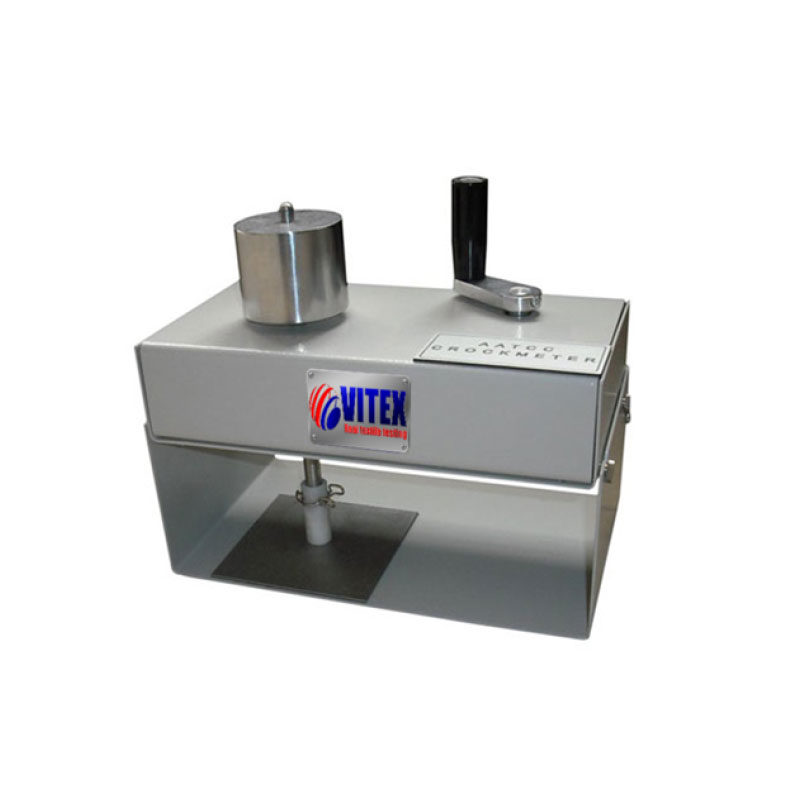Application
Rotary Vertical Crockmeter, to determine the colour fastness of textiles to dry or wet rubbing particularly for printer fabrics. Rotary crockmeter applies 1134 grams of pressure on a 16mm finger and rotate 1.125 turns clockwise then anti-clockwise.
The operating handle is however turned in one direction only.
Included Accessories
- AATCC rubbing clothing 1 box
- Sand paper 2 (pcs)
- Rings 2 (Pcs)
Standards
AATCC 116, ISO 105 X16
Weight
11 Kg
Dimensions
250x150x250 mm(LxWxH)



